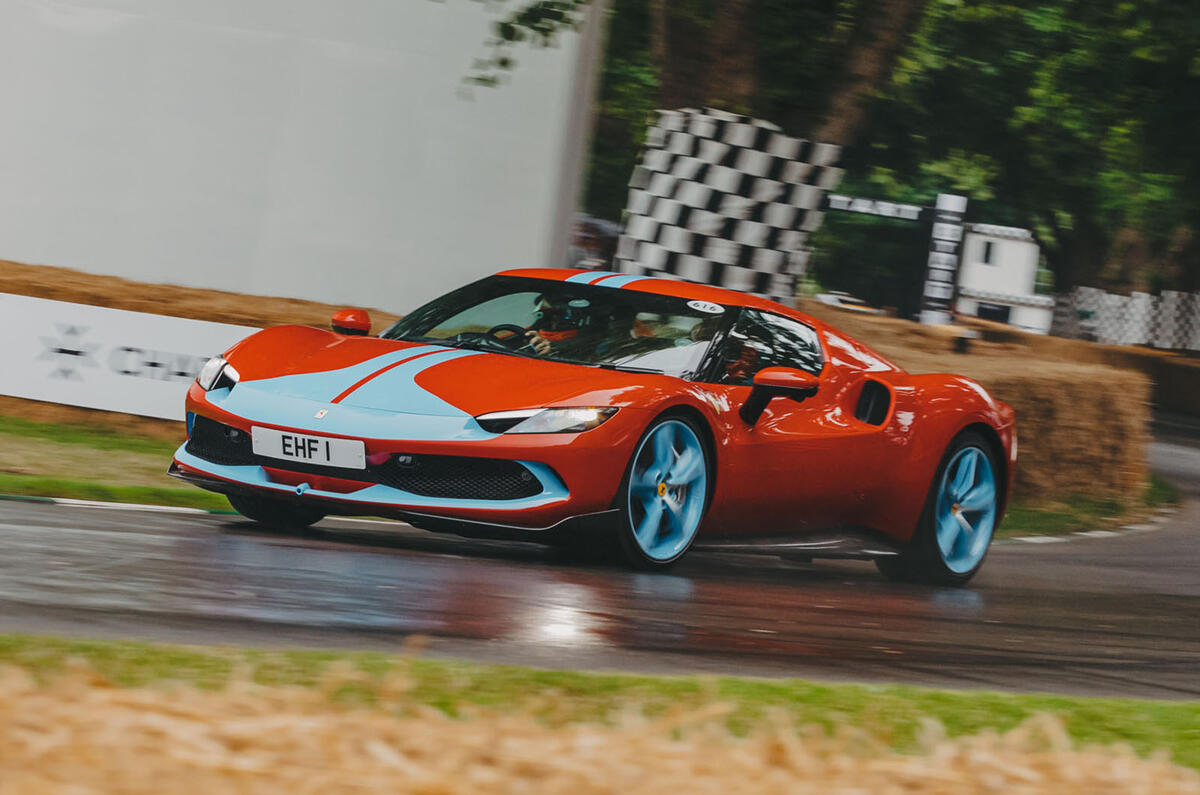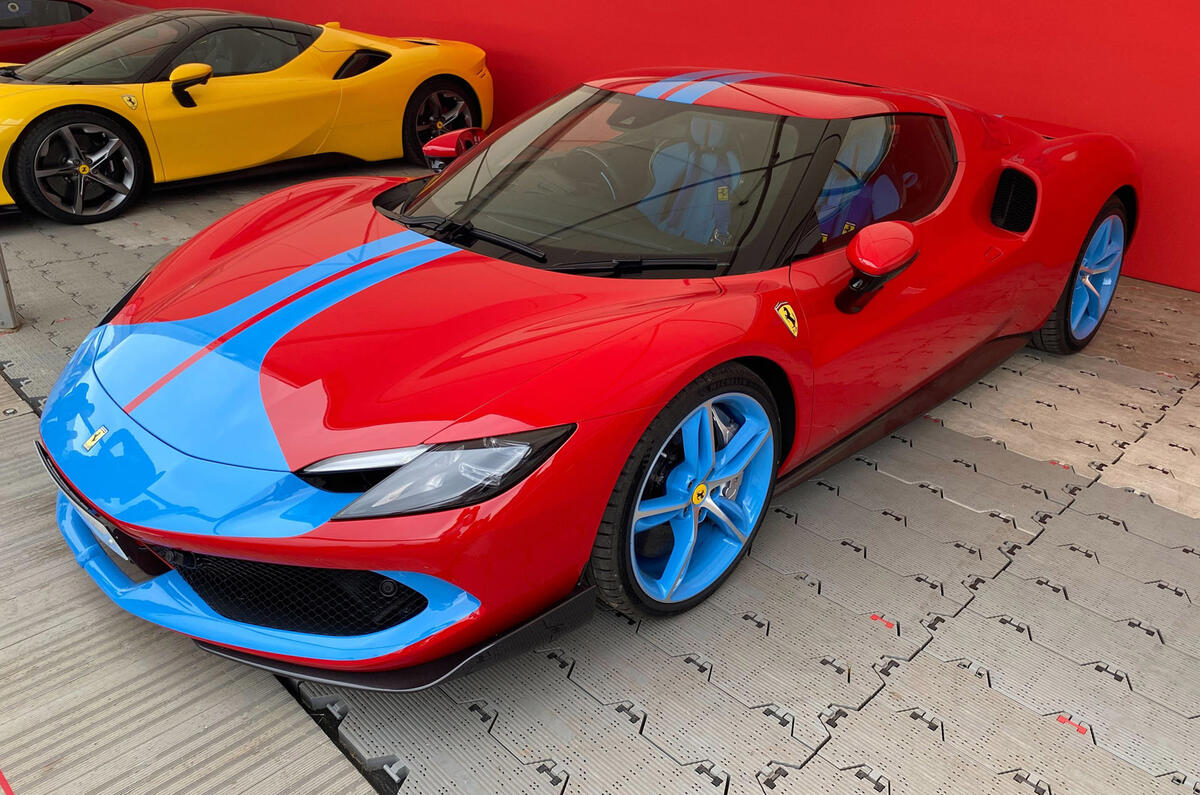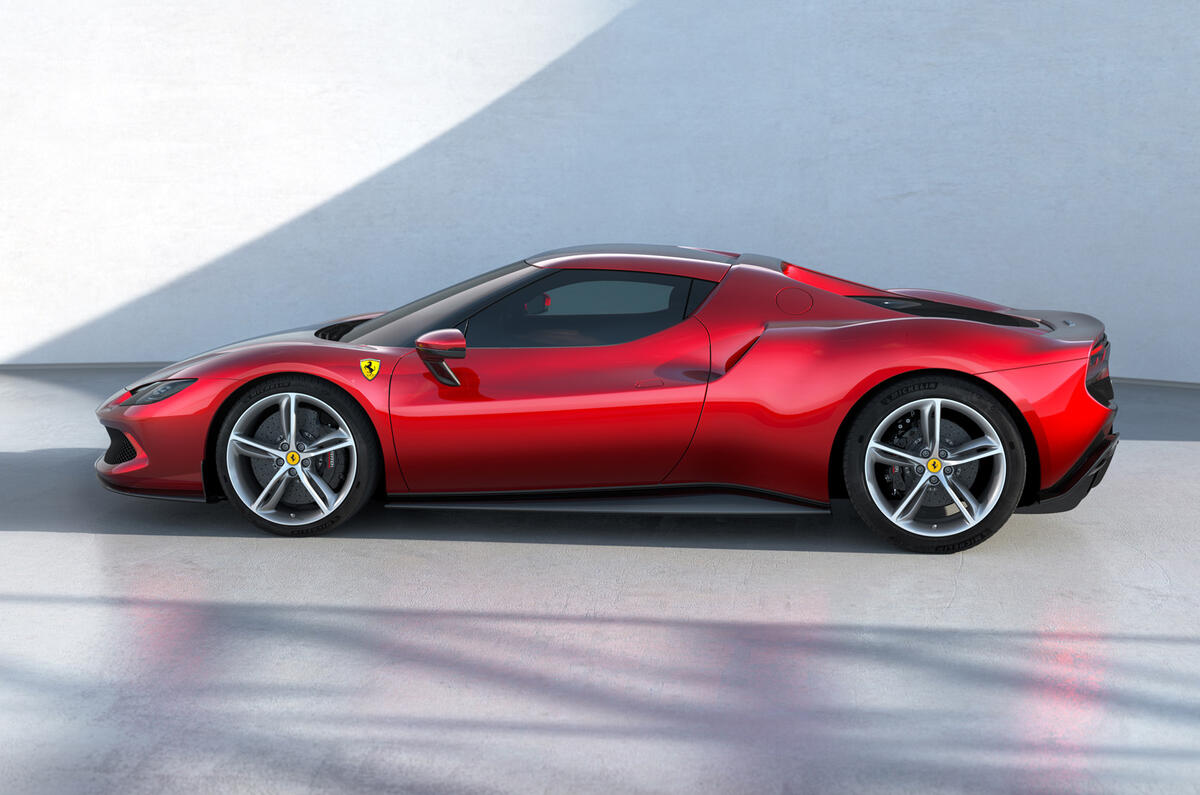The new Ferrari 296 GTB has been unwrapped as the latest entry into its Berlinetta sports car family, with an all-new hybridised V6 engine arriving in place of the traditional mid-mounted V8.
The new model arrives to complement the F8 Tributo, which will leave production in 2022 once all customer cars have been delivered. This makes the 296 GTB Ferrari's first 'mainstream' electrified offering, after the LaFerrari and SF90 Stradale halo hybrid hypercars.
Its numerical designation is a reference to its 2992cc six-cylinder engine, while the Gran Turismo Berlinetta moniker establishes it as the latest in a long line of Ferrari sports cars that stretches back to the mid-1950s.
Ferrari's switch from V8 to V6 power for its core sports car line mirrors that of rival McLaren earlier this year, with the Artura V6 plug-in hybrid arriving to replace the Sports Series model family.
First examples will be delivered in European markets beginning in Q1 2022, with prices starting from €269,000 (£231,000) in Italy, or €302,000 (£259,000) with the track-focused Assetto Fiorano package.

Powertrain
The V6 engine at the heart of the plug-in hybrid powertrain is described as the first "six-cylinder engine installed on a road car sporting the prancing horse badge". Maranello used a V6 for entry-level sports cars during the 1960s and 1970s, but these were marketed as part of its dedicated and now long-defunct Dino brand.
The 296 GTB's twin-turbocharged 3.0-litre unit – an all-new and bespoke powerplant developed in-house by Ferrari – produces 654bhp, which is equivalent to 218bhp per litre - said to be a record for a production car.
















































Join the debate
Add your comment
A ferrari v6 Le future, berLinetta, cooL name./ Hybrid smaLL ferrari, more my styLe./
Rip out the turbos.
Offer a manual box.
Obly then it would become appealing.
I find it a very cohesive design, thoughts of 70's exotica spring to mind. A 120 degree V6 engine is the optimal V angle from a balance perspective. I think that means it should be as balanced as a straight six.